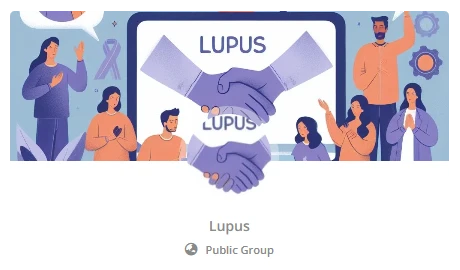Far too often, people with invisible illnesses are told, “You don’t look sick.” Phrases like this are often intended as a compliment or encouragement to those living with chronic pain. However, these comments carry unintended consequences and can lead someone to question the validity of their symptoms and feelings. Learning how to cope with invisible illness is important, but it can be tough to know where to start. In this article, we’ll cover how you can cope with an invisible illness, and what steps you can take to live a happier, healthier life while living with chronic pain.
What Is an Invisible Illness?
While there is no single, accepted medical definition of what an invisible illness is, it doesn’t take much to imagine what exactly that phrase means. Many chronic conditions cause debilitating pain, chronic fatigue, and a host of other symptoms that aren’t easily recognized by simply looking at someone.
According to Disabled World, a disability services & support organization located in Quebec, it is estimated that about 10% of people in the United States have a medical condition that could be considered a type of invisible illness or disability—that’s nearly 33 million people.
These types of conditions can make it difficult for a person to live a full, productive life. As the name would suggest, many people with an invisible illness appear “healthy” on the outside, which leads to comments like “you don’t look sick,” or “you look fine.” These can even come from those closest to you, such as family members or friends, and even medical practitioners who question whether they are truly sick.
What Are Some Common Types of Invisible Illness?
While nearly one in two people in the U.S. has a chronic medical condition of one kind or another, not all of them are considered to be an invisible illness. Since there is no one accepted medical definition of what an invisible illness is, there is a long list of conditions that may count as one. Still, some commonly recognized invisible illnesses, to name a few, include:
- Fibromyalgia: Fibromyalgia is often considered to be the figurehead of invisible illnesses. This chronic condition is classified by symptoms of musculoskeletal pain and chronic fatigue. Oftentimes, people are given a diagnosis of fibromyalgia when all other tests or screenings find nothing, also known as a diagnosis of exclusion.
- Crohn’s disease: Crohn’s disease is a type of inflammatory bowel disease marked by severe abdominal pain, diarrhea, fatigue, and scarring of the intestines.
- Chronic fatigue syndrome: Another common invisible illness is chronic fatigue syndrome (CFS). CFS is a condition of unknown origin that causes fevers, sore muscles, and prolonged periods of severe fatigue or exhaustion.
- Rheumatoid arthritis: Autoimmune disorders like rheumatoid arthritis (RA) are among some of the most common types of invisible illness. RA causes the immune system to attack the joints, leading to debilitating pain and joint damage.
- Sjogren’s syndrome: Another autoimmune disorder that leads to invisible illness is Sjogren’s syndrome. In the case of Sjogren’s syndrome, the body attacks its healthy cells that produce saliva and tears, leading to symptoms such as dry mouth and dry eyes.
- Diabetes: Diabetes is a disease that affects millions of people around the world. It inhibits the body’s ability to produce and respond to insulin properly, which often causes no symptoms at all. When symptoms of diabetes do occur, they typically include excessive thirst or urination, fatigue, weight loss, or blurred vision.
- Lupus: Lupus is another autoimmune disease that affects millions of people. For people with lupus, their immune system attacks their body’s tissues and organs, including the joints, skin, blood cells, and brain.
Join our LUPUS Community Group online!

- Migraines: Recurrent headaches that result in severe pain, nausea, and impaired vision are known as migraine headaches. These can dramatically affect a person’s ability to perform simple everyday tasks and are among the most common types of invisible illness.
- Mental health conditions like depression and anxiety: It’s important to remember that invisible illnesses can involve your mental health, too. Among the most common mental health conditions are depression and anxiety, each of which can result in physical symptoms such as headaches, digestive problems, and sleep disturbances.
How To Cope With Invisible Illness

It isn’t hard to imagine that living with an invisible illness is difficult. As if the debilitating symptoms and chronic pain weren’t enough, the lack of resources and understanding from others can make living with an invisible illness feel like a constant, uphill battle. This can leave you feeling isolated and alone with nowhere to go.
Learning how to cope with invisible illness involves several strategies and steps. It is a constant process that requires a lot of work, but with the right support and resources, you can learn how to cope with invisible illness, and live a happier, healthier life. The first step to coping with an invisible illness is to find the right doctor, which may involve getting a referral.
Get a Referral
Finding the right doctor can make all the difference when it comes to figuring out how to cope with invisible illness. There are doctors who understand and specialize in invisible illnesses, and medical practitioners who stay up to date on the latest research and advancements in the chronic pain field.
If your current doctor doesn’t fit that description, or if you aren’t currently seeing a doctor, you should consider finding one that does. Ask for a referral to a doctor within the invisible illness community, and be sure to check online reviews. Oftentimes, people within the invisible illness community will know of specialists or exceptional doctors in your area, or who are available via telehealth.
It’s important to understand that you deserve a doctor who not only cares about you but who wants to help you better understand your invisible illness and find the right treatment methods.
Lastly, it’s important to remember that invisible illnesses are often accompanied by mental health conditions like depression or anxiety. While this is completley normal, if you aren’t already, you may want to consider finding a therapist who can help you work through the complex feelings that sometimes cause you to experience a dip in mood.
Consider Therapy
One of the best things you can do for yourself when learning how to cope with invisible illness is to see a therapist. When looking for a therapist, be sure to search for one who is experienced in treating patients with chronic pain. These mental health professionals can help you find new, healthy ways to optimize your mental health, which can help you achieve the best results possible for your physical health.
If you find that therapy isn’t enough, or you require more care than your provider can give you, know that there are plenty of options available. Your therapist may recommend starting a medication regimen, which can help you manage your symptoms should therapy alone fall short. Inpatient mental health care facilities can also be a great place to work through the underlying causes of your symptoms under more constant care.
Once you’ve found the right doctor and mental health care provider, should you need it, there are other steps you can take to cope with your invisible illness. These include things that focused more on dealing with the social challenges invisible illnesses bring, rather than the mental or physical.
Encourage Others to Educate Themselves
Nobody knows your invisible illness better than yourself. If you’ve suffered from an invisible illness and struggled for validation from friends, family, or the medical community, you’re an expert. Consider meeting with others to help encourage and educate them on your condition, along with the importance of understanding the nuances of invisible illnesses.
Getting involved with advocacy groups is another great way to help spread awareness and educate your community about invisible illnesses. Consider meeting with local community members through support groups, charities, non-profit organizations, or other group settings to share your experiences and what you’ve learned along your journey.
Find a Support Group

By far, one of the most effective ways to cope with an invisible illness is to find a support group. Awareness about invisible illnesses is growing every day, not just in the medical community, but in society in general. There are support groups you can join in person, which may be run by local hospitals, non-profits, or other community organizations that can help you connect with neighbors in your community who may be living with invisible illnesses.
There are also online support groups, such as Facebook communities, to help you navigate the ups and downs of invisible illnesses. Other online support groups offer resources that can help you learn more about your invisible illness, find new treatment methods, or simply connect with other people who have the same ailment as yourself.
One such support group is the Pain Resource Community. The Pain Resource Community is an online support group aimed at helping people with all types of chronic pain and invisible illnesses live healthier, happier lives. As a member of the community, you can connect with thousands of other people, join specific groups for different conditions, share resources, and learn about what other people are doing to cope with their invisible illnesses.
If you’re looking for advice on how to cope with invisible illness, and you’re looking for a place to start, join the Pain Resource Community today to start building your support network.
Do You Know How to Cope With Invisible Illness?
Let us know how you tackle your invisible illness in the comments section below!
What topics related to invisible illnesses should we cover next?
Email us your ideas at info@painresource.com!
Are you or someone you know living with an invisible illness? Looking for a support group?
Join the Pain Resource Community today to start connecting with other spoonies just like you! Becoming a member is free and simple, and doing so automatically connects you to thousands of other chronic pain warriors. Start building your support network today by clicking here!


I have permanent disabled lic plates … but I don’t appear disabled (I have heart / lung (breathing) severe problems as well as back pain. I have been stopped by a few people, some yell at me, for taking a Disabled Parking Space. It is bad enough to be disabled, and worse when others think they know more than they do about me. I try to just take it in stride, but it makes me want to limp when I get out so they can visualize I’m disabled.
@eldorado23 That is the worst. Not only do they have no idea, they think they know everything. And, when did the everyone start thinking they need to police everyone else anyway?
@eldorado23 Reading about your experiences makes me madder than a hornet! People have so much audacity sometimes– invisible illness and pain is just as valid. Thank you so much for sharing with us.
@emilyxlc @eclecticzebra “You don’t look like what you’ve been through either”
brb getting this on a t-shirt
@zachary-pottle Ummm… this should be our official slogan.
Buuuut, could this be in the future PR merch store?
@eclecticzebra You are a genius. I’m in.
I like to think I have a PhD in masking. LOL The ‘you don’t look sick’ thing pisses me off and really is the most ignorant thing someone could say. How are we supposed to look?! LOL Really. The only visual I have for my many invisible illnesses is the ability to pop my shoulders out of place, or bend my thumb flat against my wrist-usually people get it then. LOL Some folks just don’t get it without a visual. The easiest response is “you don’t look like what you’ve been through either” Almost always an immediate shut down on the stupidity..The better my makeup looks, the better I’m feeling, it’s the ultimate masking..
One thing I learned a long time ago for sure, you CANNOT judge a book by it’s cover. You never know the pain and struggle people endure each day without knowing the real person. We all try to hide our problems and our pain, some are just better at it.
@happyboy THIS! Some people are SO good at masking their pain to function.